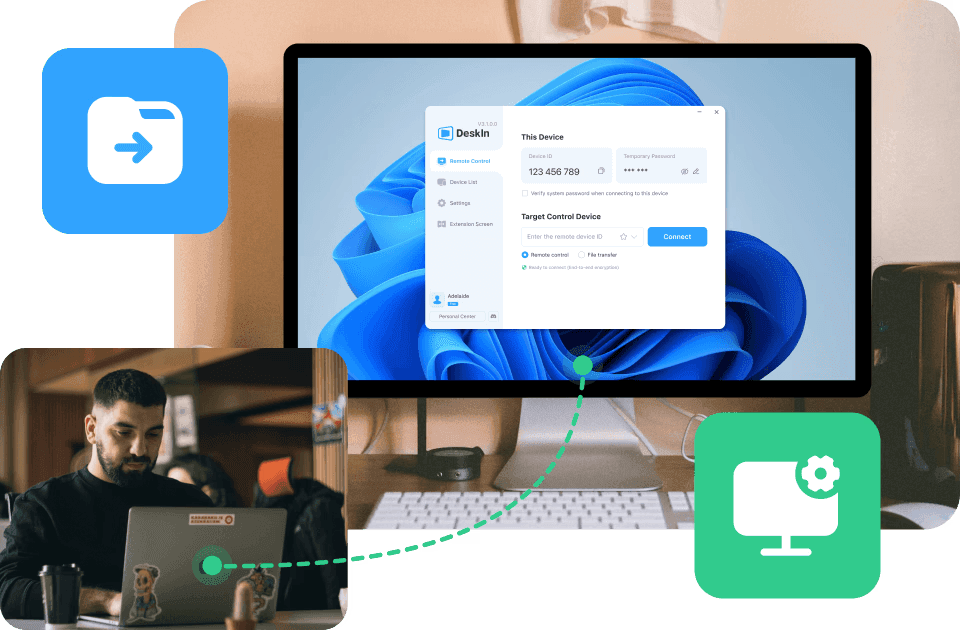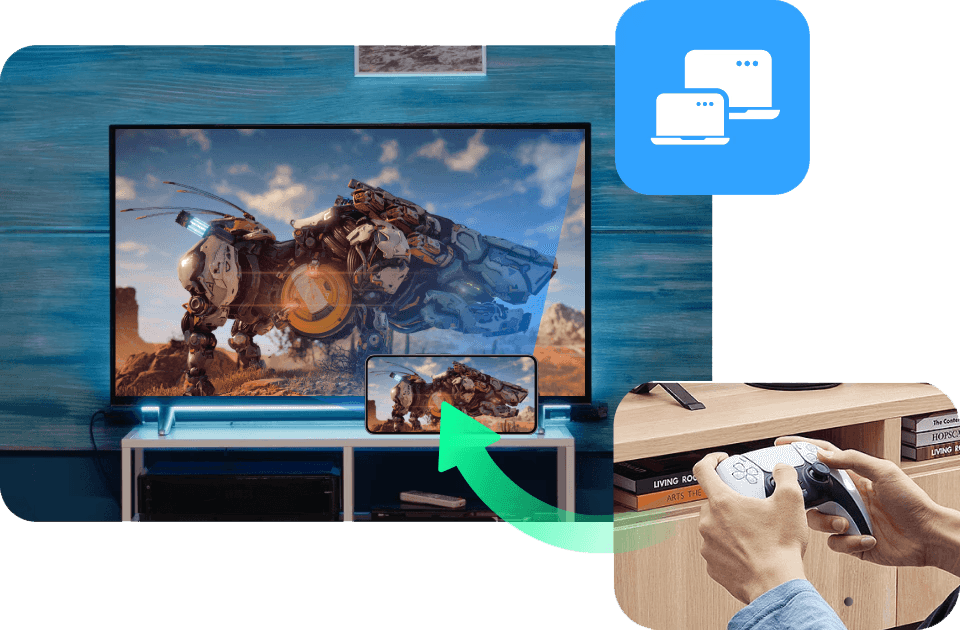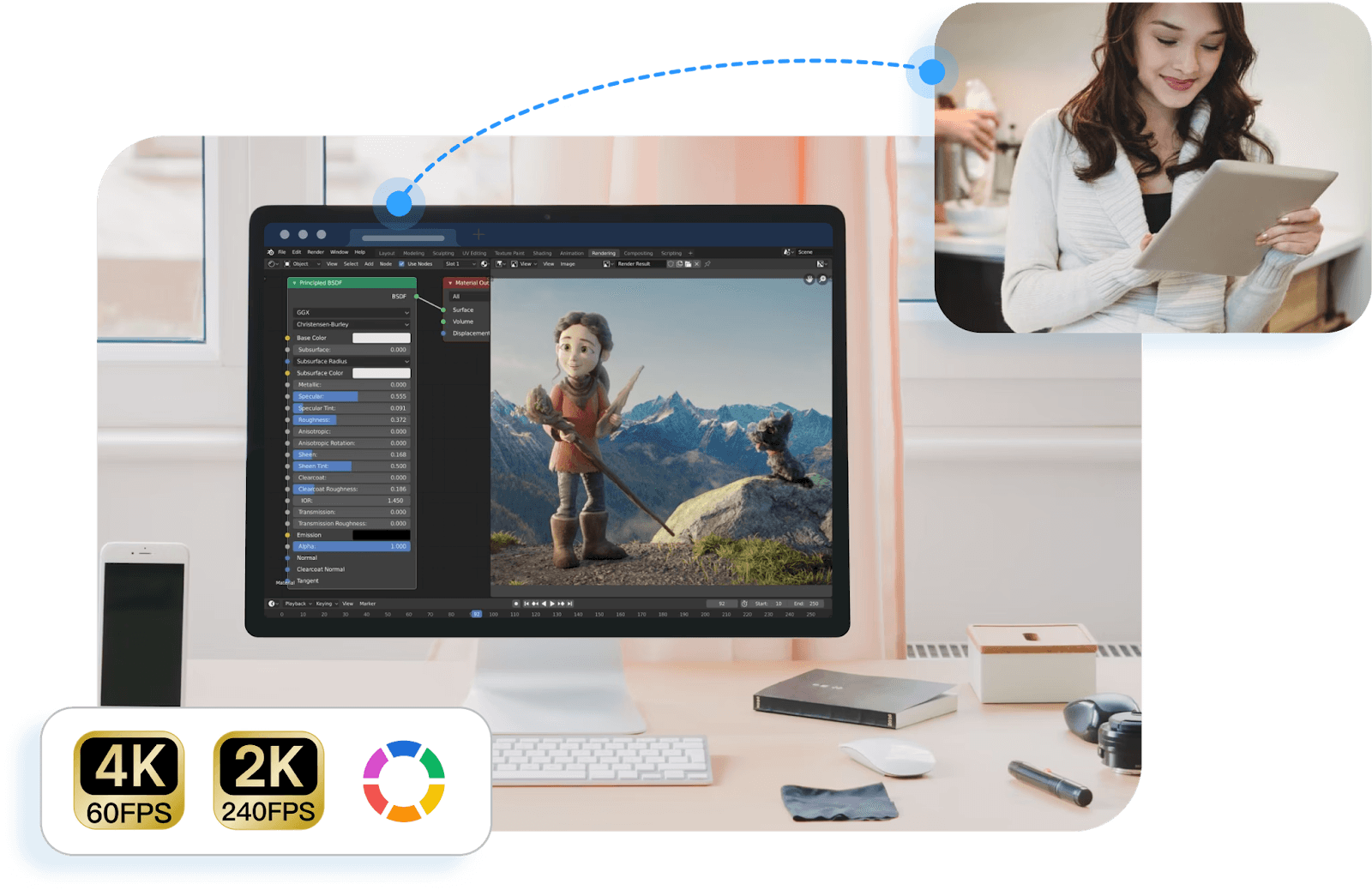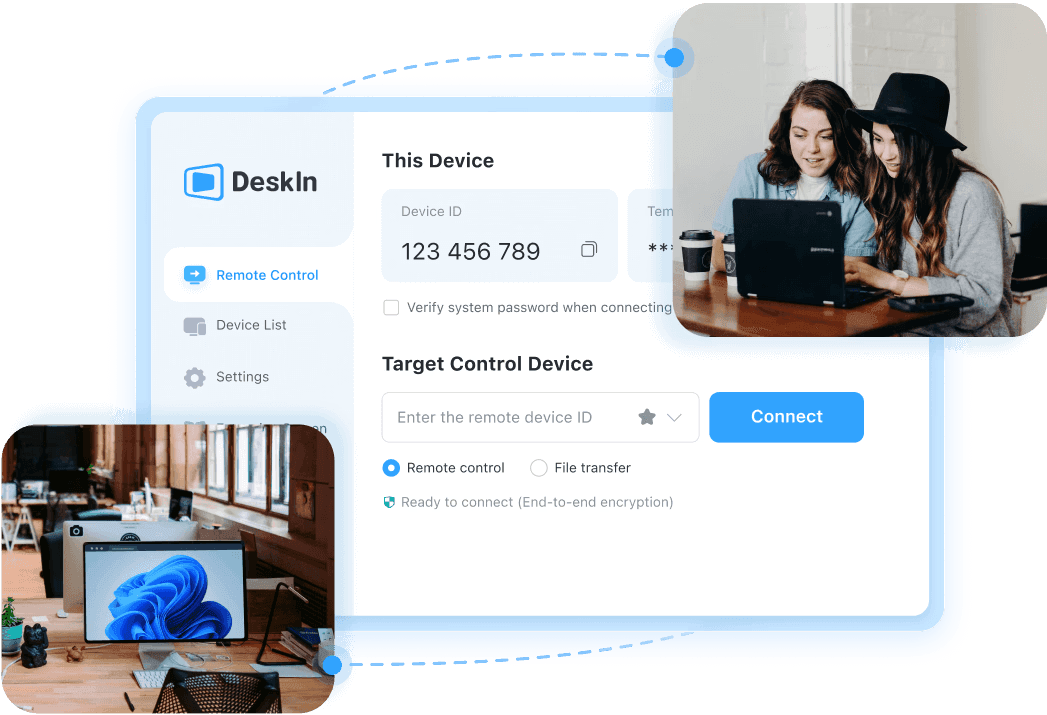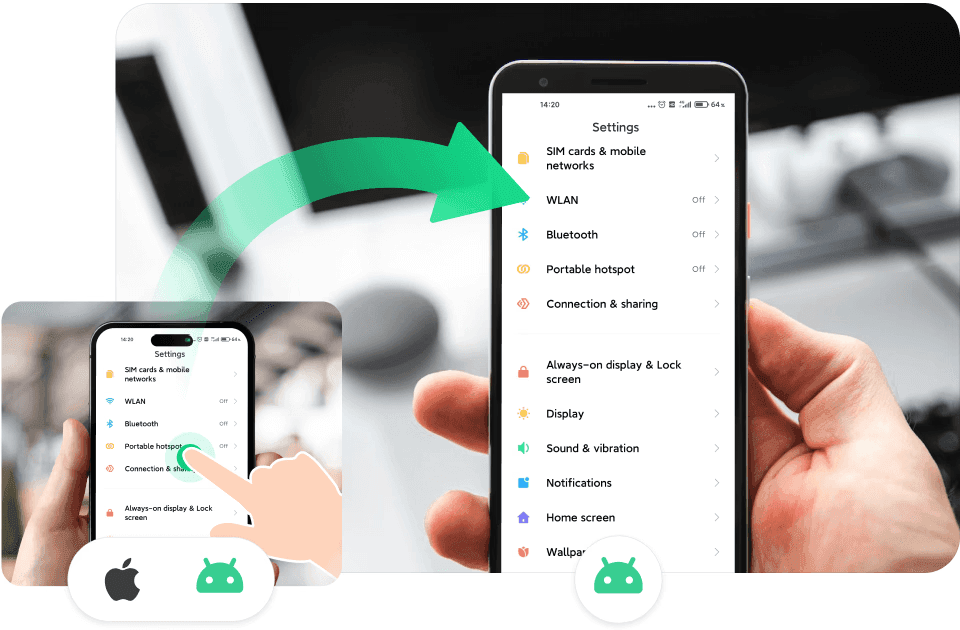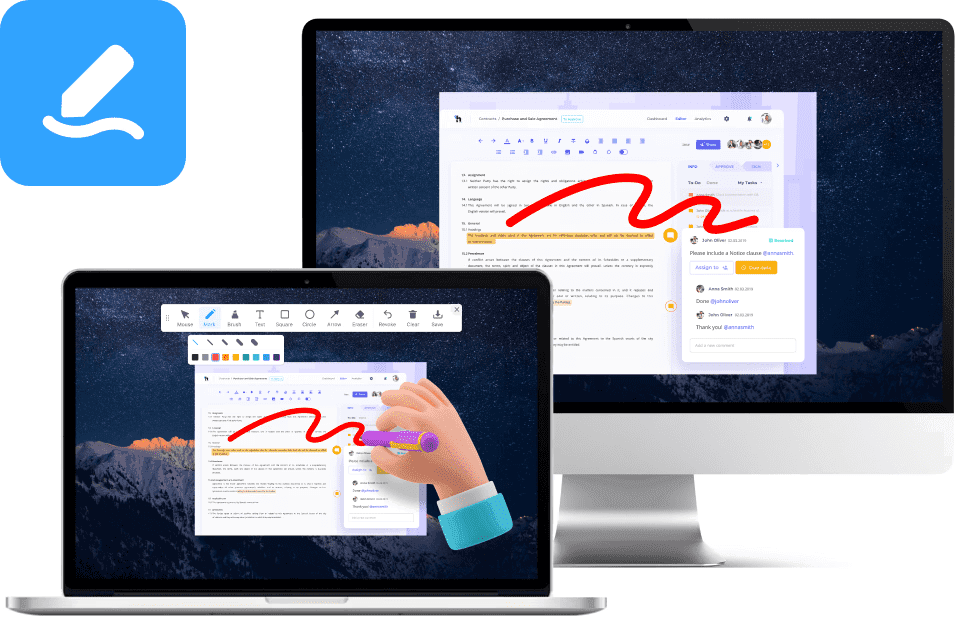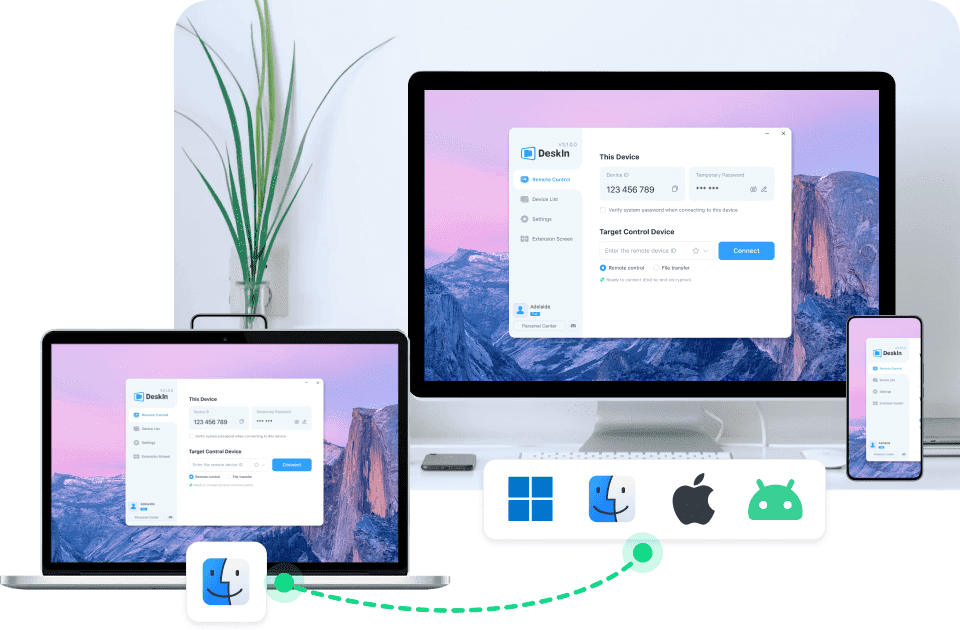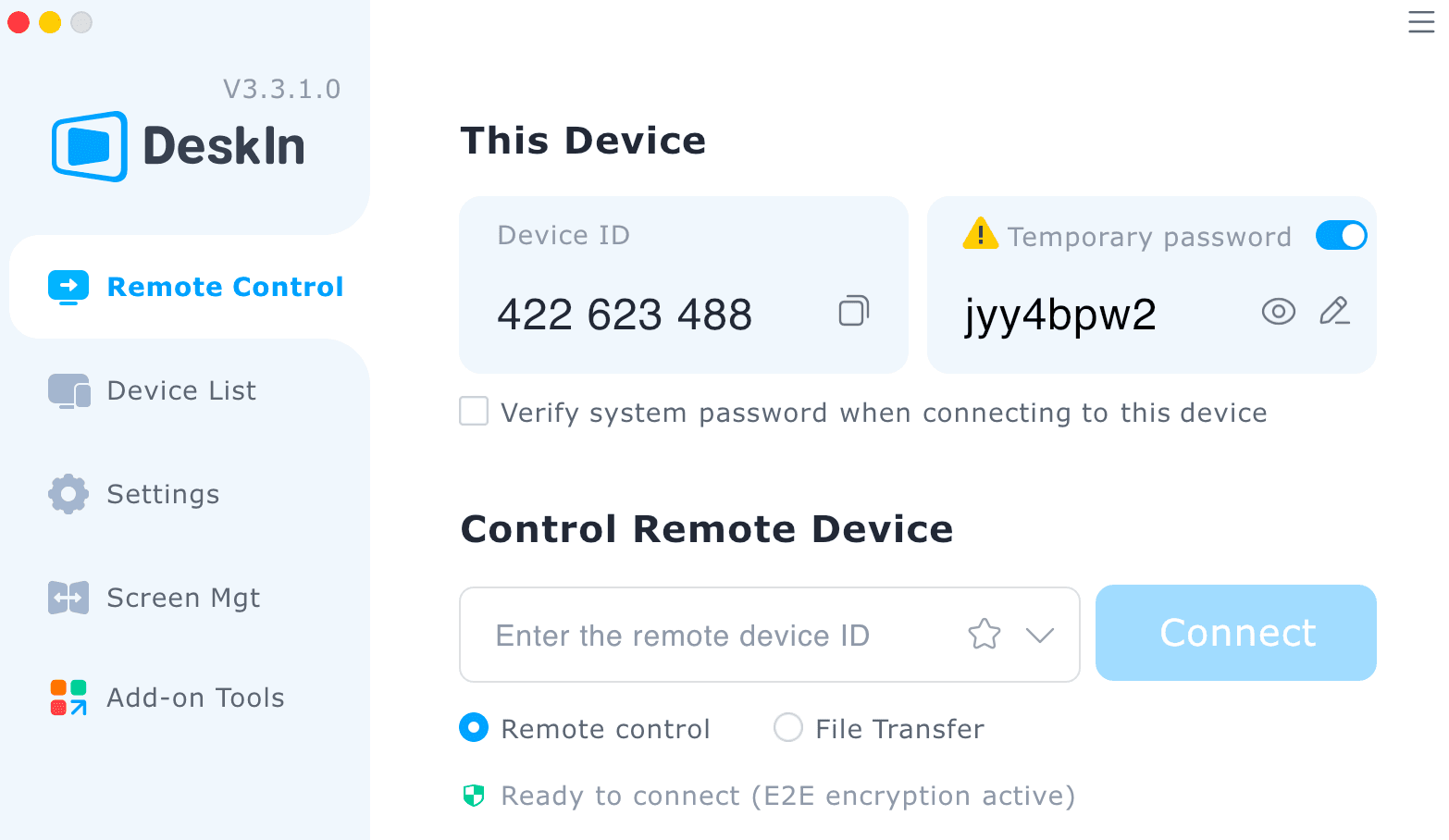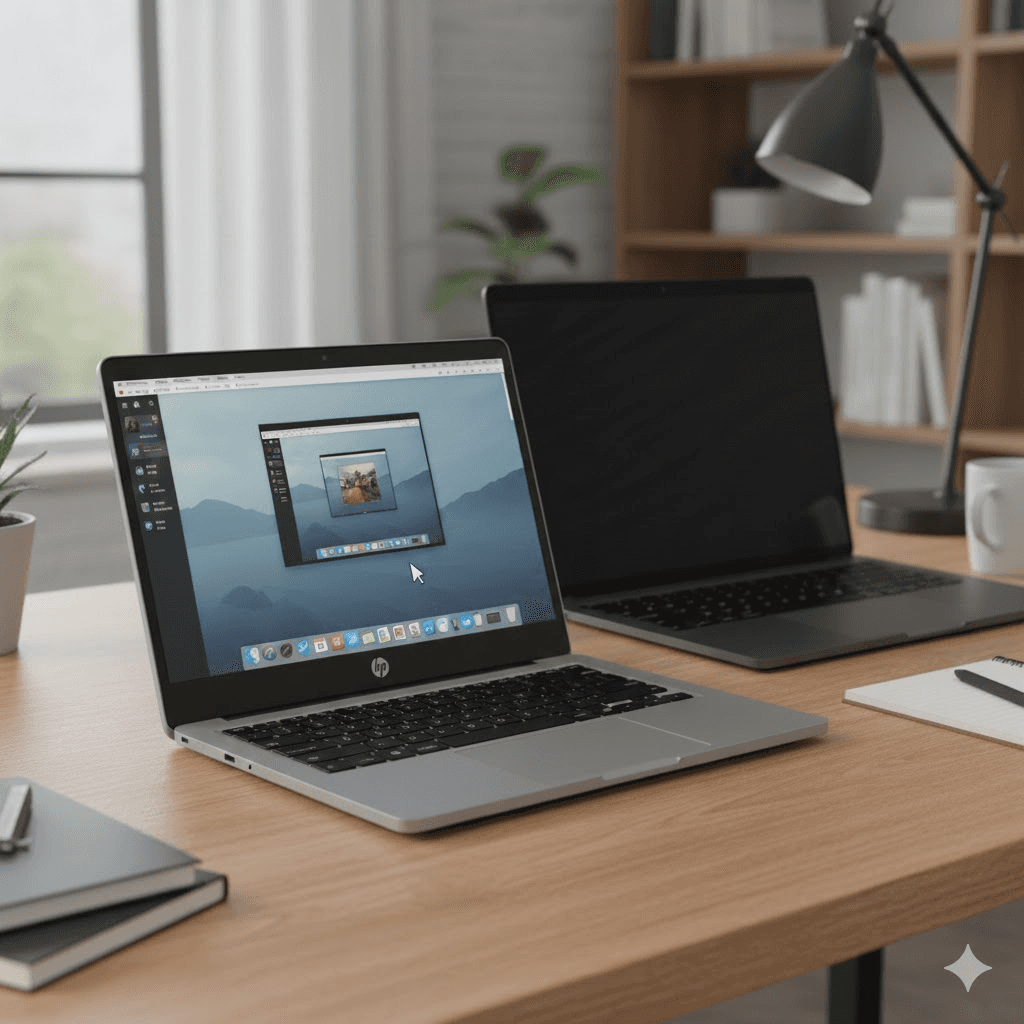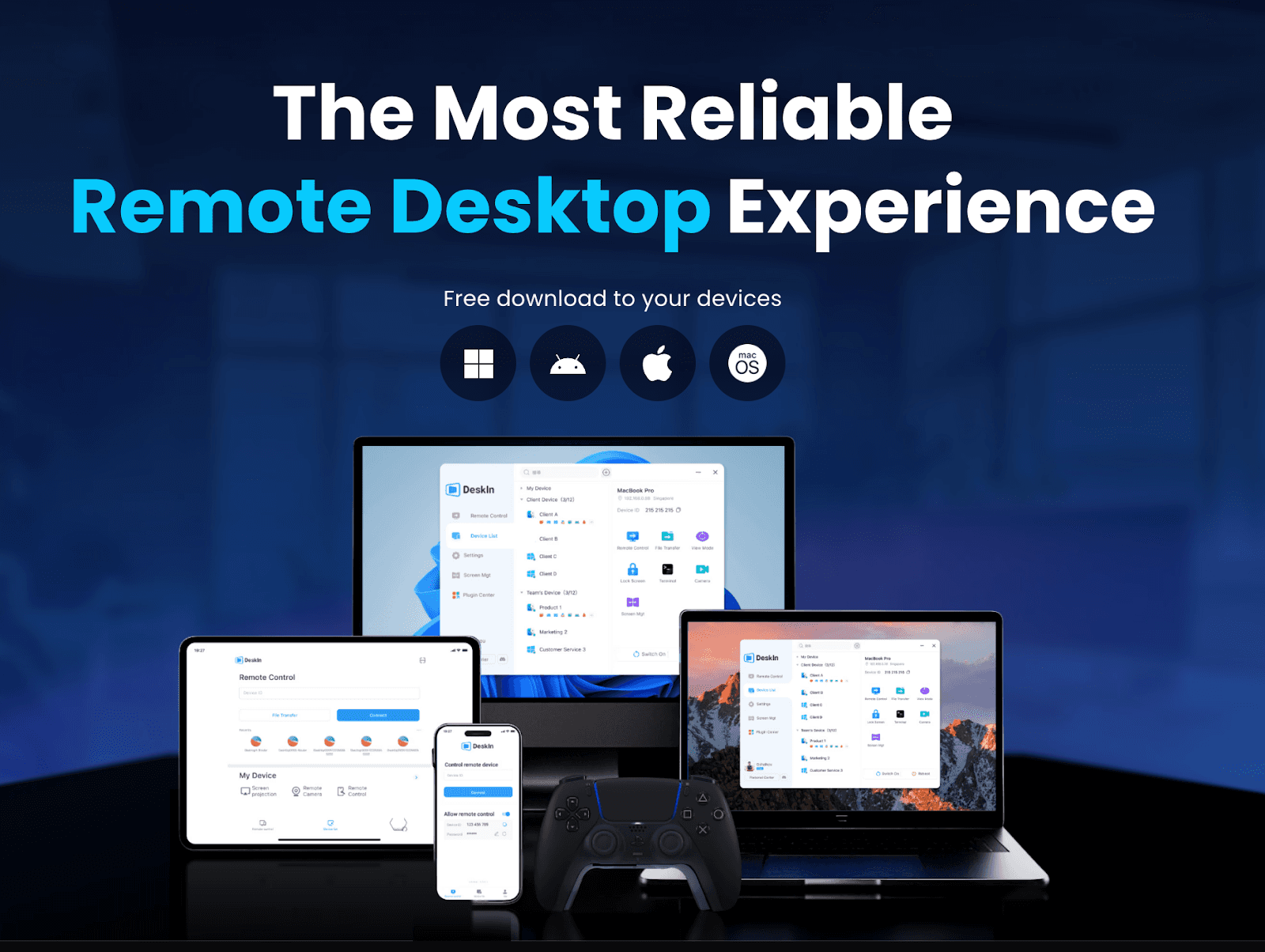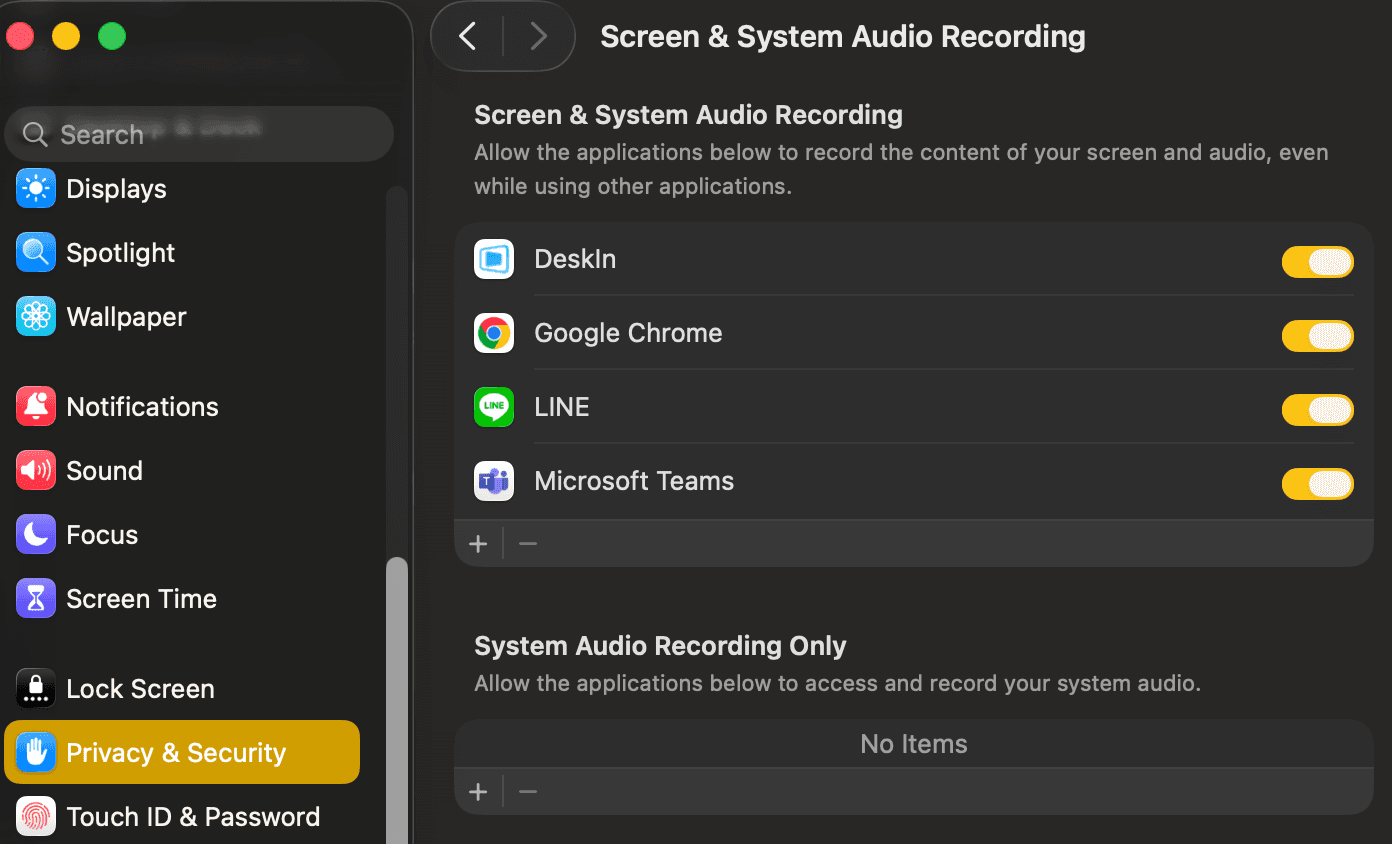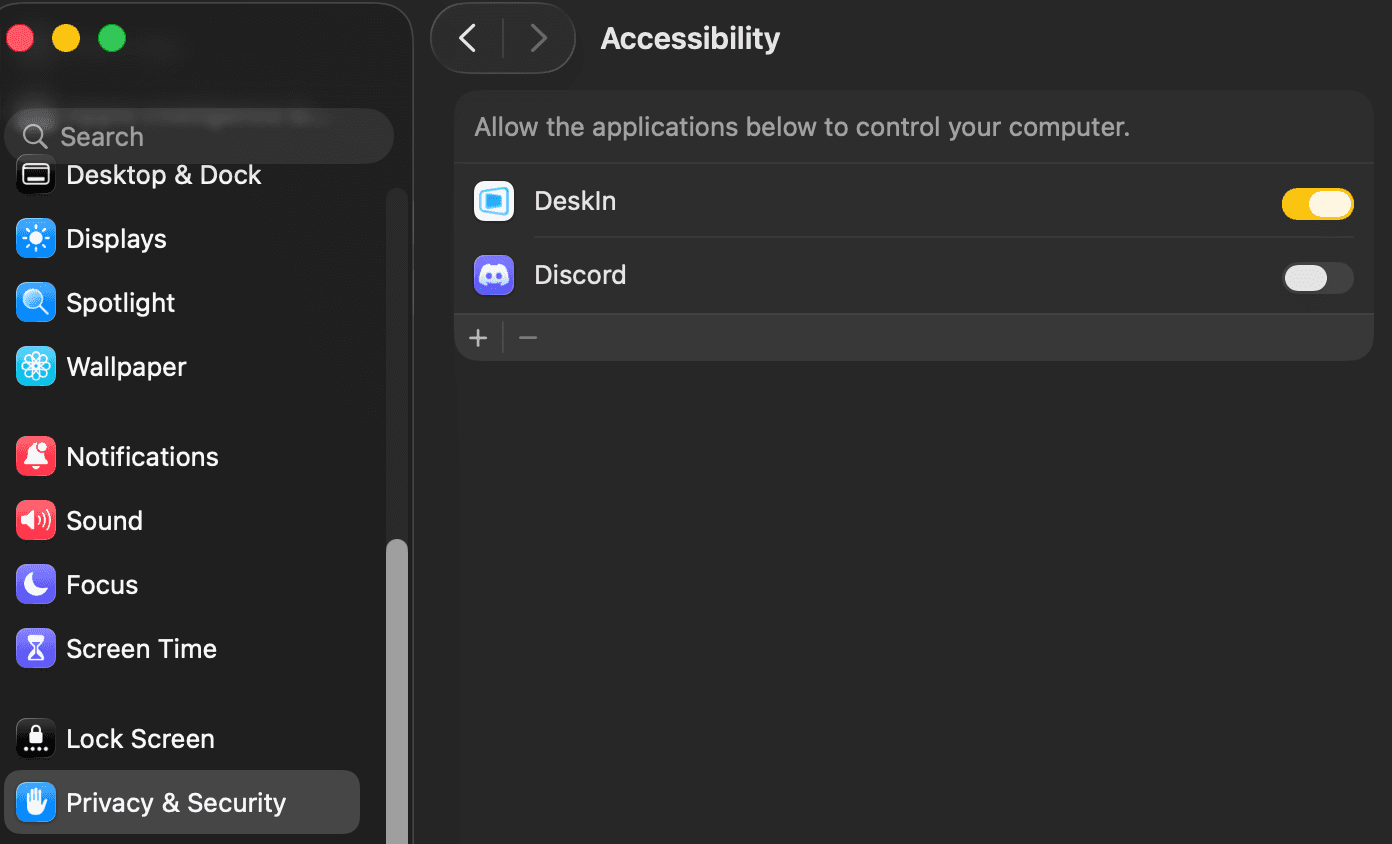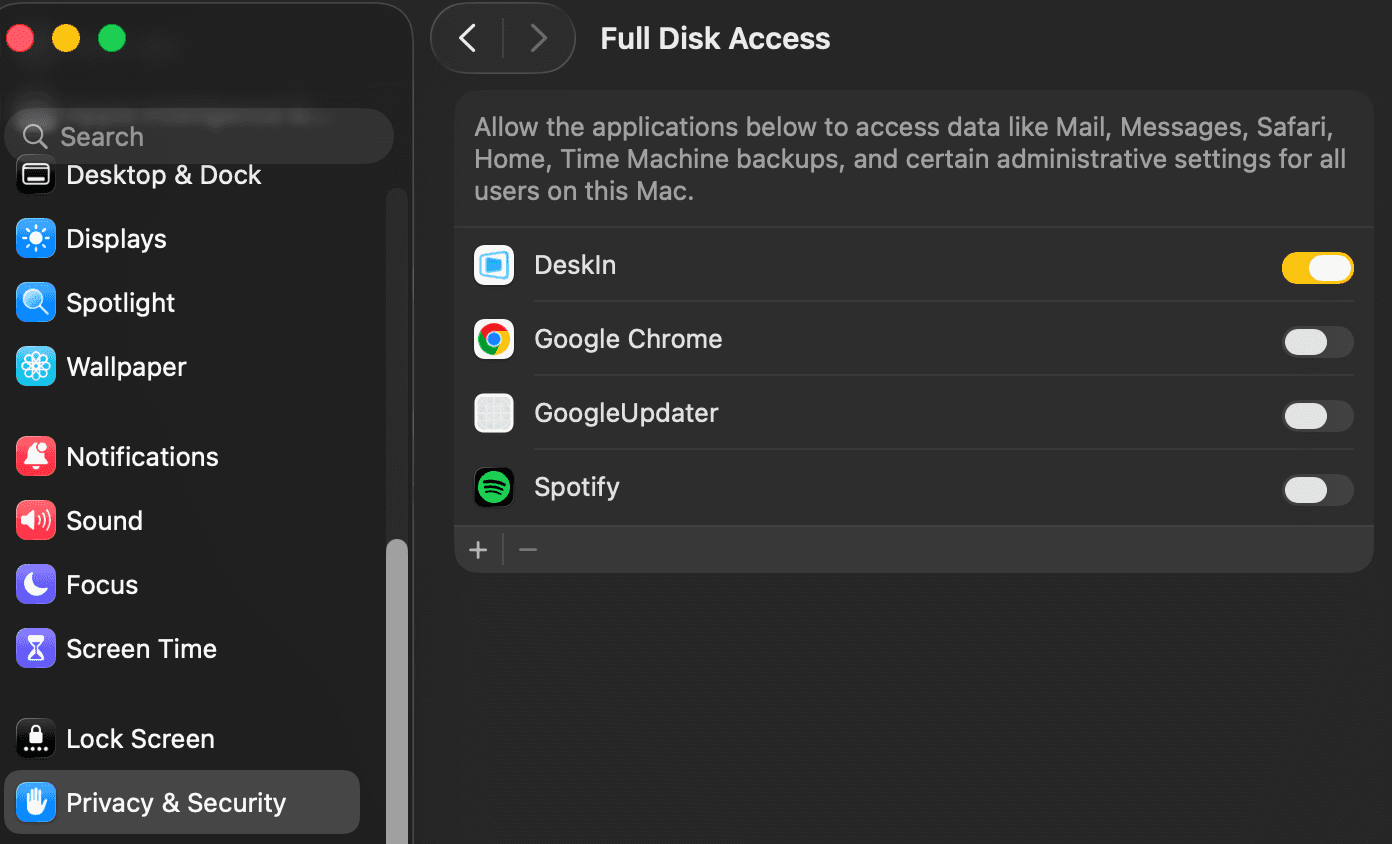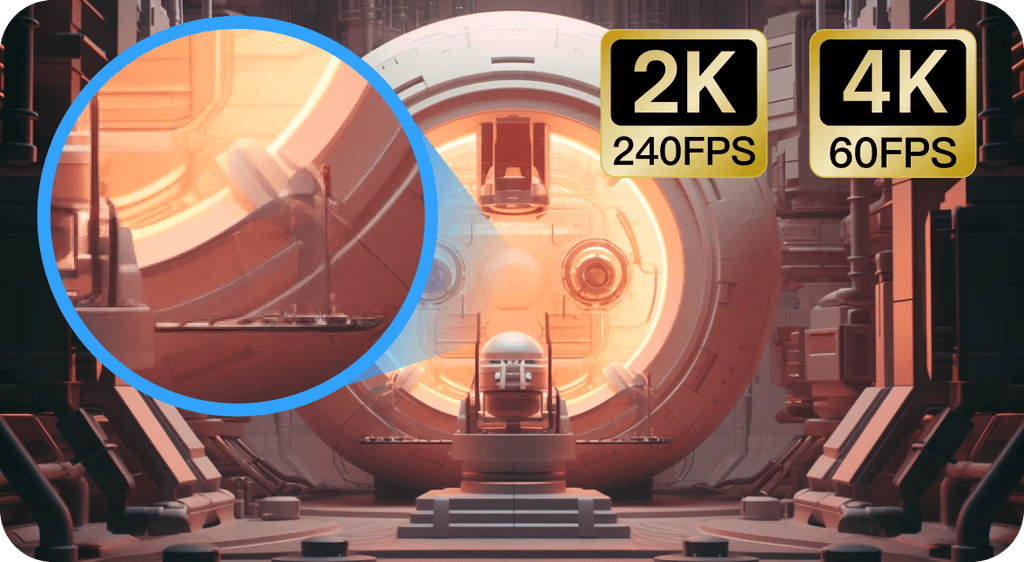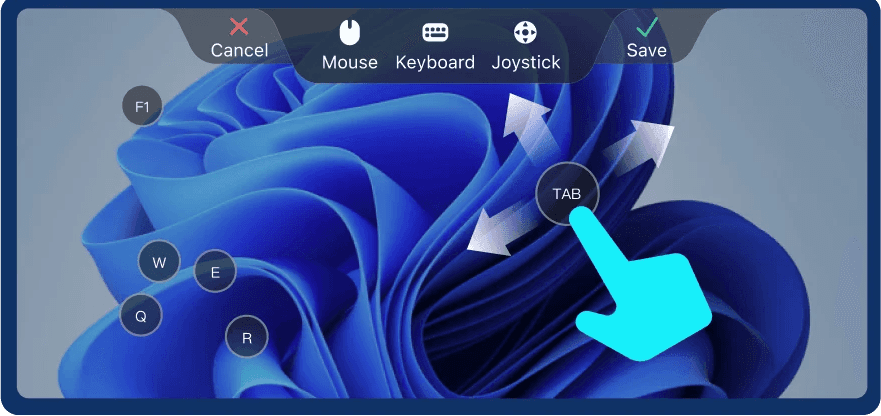Have you ever wondered if you could link two computers together to share files, expand your workflow, access one PC remotely, or even turn an old laptop into something useful again? You're not alone. From Reddit threads to tech forums, users constantly look for practical ways to connect two computers for more control and convenience.
Whether you want to connect two Windows PCs on the same network, transfer data between laptops, or use one machine to remotely manage another, there are multiple solutions, both wired and wireless. In this guide, we'll explore four flexible methods, from LAN cables to remote access tools, and help you choose what works best for your setup.
Want a simple and easy tool to connect two computers directly? Try DeskIn! It doesn't require the same network or hardware, just download it and start connecting your two computers by clicking the button in the upper right corner!
Overview: Common Use Cases of Dual PC Connections
Connecting two computers isn't just a tech hobbyist's experiment — it's a real-world solution to everyday needs. Here are some of the most common reasons people link two PCs.
File Sharing Between PCs: Quickly move large files, folders, or media without relying on USB drives or cloud storage.
Remote Work & Multi-Device Productivity: Use one device to control another, access work files from home, or expand your digital workspace.
Remote Support: Help friends, family, or colleagues troubleshoot issues by remotely accessing their computer, saving time and avoiding complicated phone instructions.
Collaborative Editing or Gaming: Play local multiplayer games, sync devices for LAN setups, or co-edit documents without lag.
System Backup and Migration: Transfer data when switching to a new computer or back up your important files locally between systems.
Whether you're a casual user, a gamer, or someone working across multiple devices, setting up a connection between two computers can unlock powerful flexibility and efficiency.
Method 1. Connect Two PCs Through Network Sharing
If both of your computers are on the same Wi-Fi network, you can set up network sharing to transfer files, access folders, or share printers. This is one of the most efficient ways to connect two computers wirelessly on Windows 10 or 11, especially for local file sharing and collaborative use.
Please note that this method only applies to the same network. If you need to connect remotely, we recommend using DeskIn (no need for the same network and low latency), quickly click button below to try it!

📌 Tips: To ensure security, use a password-protected Windows account and limit shared folder access to trusted users only. Avoid enabling these settings on public networks.
Here are the detailed steps for connecting two computers via WiFi:
Step 1. Make sure both computers are connected to the same Wi-Fi network.
Step 2. On both PCs, go to "Settings > Network & Internet > Advanced network settings > Advanced sharing settings", and enable "Network Discovery" and "File and Printer Sharing" under "Private Network."
Step 3. Right-click on the folder you want to share, go to "Properties > Sharing > Share", and choose users or permissions.
Step 4. On the second PC, open "File Explorer", click "Network", find the first PC, and open the shared folder.

Method 2. Connect Two Laptops Wirelessly via Bluetooth
If you're only transferring small files and don't need ongoing access, Bluetooth is a simple and cable-free solution to connect two laptops or PCs together. It's built into most modern Windows devices and doesn't require internet access.
It should be noted that, though Bluetooth is simple, it is not ideal for large file transfers or continuous use. If you need to transfer large files and require high speed, we recommend that you use DeskIn to transfer large files securely and quickly. But it's best when speed isn't a priority and you just need to share a few documents or images. Here's how it works.
Step 1. Enable Bluetooth on both devices via "Settings > Bluetooth & devices".
Step 2. On one computer, click "Add Bluetooth or other device > Bluetooth", then select the other PC when it appears. Confirm the pairing code on both sides.
Step 3. To send a file, right-click it and choose "Send to > Bluetooth device". Alternatively, use the Bluetooth File Transfer app built into Windows.

Method 3. Link Two Computers Using a LAN Cable (Ethernet)
For the fastest and most stable connection between two PCs, especially for large file transfers or creating a local network, using an Ethernet (LAN) cable is the best wired option. It doesn't require internet access and delivers high-speed performance, though it does require physical access to both devices and some basic IP configuration knowledge.
Here is the step-by-step guide for connecting 2 computers using LAN cables:
Step 1. Connect both computers using a Cat5e or Cat6 Ethernet cable. Most modern PCs support auto-sensing, so a regular Ethernet cable usually works.
Step 2. Enable File and Printer Sharing on both machines via "Settings > Network > Advanced sharing settings".
Step 3. Manually assign IP addresses:
PC 1: IP = 192.168.0.1, Subnet = 255.255.255.0
PC 2: IP = 192.168.0.2, Subnet = 255.255.255.0
Use "Control Panel > Network and Sharing Center > Change adapter settings", then right-click the "Ethernet adapter > Properties > IPv4".
Step 4. Share the desired folders and access them via "File Explorer > Network" on the second PC. Too complicated or can't find a LAN Cable? Maybe you should try DeskIn for simple, plug-free operation.


Method 4. Best Solution for Remote Access: Use DeskIn 🔥
While traditional methods like network sharing or LAN cables work well in fixed setups, they fall short in flexible, modern use cases, such as remote work, travel, or managing multiple computers across locations. Bluetooth is slow and limited to small files, and LAN or Wi-Fi connections often require both devices to be close to each other physically, or on the same network. But what if you want secure, fast, and cross-device access?
That's where a powerful third-party tool comes in. DeskIn is a high-performance remote control and file transfer app designed to bridge the gap between multiple devices, without the limitations of traditional methods. Whether you're a student working across laptops, a gamer managing two PCs, or a professional needing seamless access to files and apps, DeskIn delivers real-time control and file sharing with unmatched stability and ease.
📌 Key Features of DeskIn:
True Remote Control: Access and control your PC or second computer from anywhere — no LAN or shared network needed.
Fast File Transfers: Send large files (up to 12MB/s) securely, without compression or size limits.
Cross-Platform Access: Work flawlessly across Windows, macOS, Android, and iOS devices — link your computers, phones, and tablets freely.
Privacy & Security: Includes screen masking, session lock, and email verification to keep your data safe.
Screen Management: Supports virtual screens and multi-screen expansion, giving you flexible workspace control during remote sessions.
Collaboration Tools: Features include clipboard synchronization and remote camera access, making multitasking, file sharing, and real-time monitoring easier than ever.
Optimized for Poor Network Conditions: Even over hotspots or unstable connections, DeskIn remains smooth and responsive.
DeskIn is considered to be the best free remote desktop software, as it has so many advanced functions, and it only requires very simple operations. Here are the easy steps for using it to connect two computers:
Step 1. Download DeskIn on both computers from the official DeskIn website or app store.

Step 2. Create and sign in with the same account on both devices.

Step 3. After that, you will see the device ID and the password on both computers. On the controller device, insert the device info to connect your second PC.
Step 4. Now, when the connection is done, you can choose "Remote Control", "File Transfer", or other features you need, and follow on-screen instructions to connect instantly. Click the download button in the upper right corner to experience DeskIn's great features!

👀 You May Also Need:
FAQs About How to Connect Two Computers Together
Can you connect 2 computers without internet?
Yes, you can connect two computers directly without using the internet. Common methods include using a LAN (Ethernet) cable or enabling network sharing over a local Wi-Fi network. Both approaches allow you to transfer files or share resources between devices, but they require some configuration, like setting IP addresses or turning on network discovery.
What's the best way to transfer large files between two PCs?
If you're transferring large files (e.g., videos, software packages, backups), using a LAN cable offers the fastest local method. However, for remote transfers or when physical access isn't possible, DeskIn is ideal — it supports high-speed file transfers up to 12MB/s and doesn't impose file size limits like cloud drives or Bluetooth.
Can I use two computers as a dual setup for multitasking?
Yes, and DeskIn makes it easier. With its multi-screen expansion feature, you can extend or mirror screens between devices, turning one computer into a second monitor or workspace. This setup is perfect for programmers, content creators, or traders needing more screen real estate without extra hardware.
Final Words
Whether you're looking to share files, control another device, or work across two computers, there are multiple ways to connect two computers — from local network sharing and Bluetooth to using a LAN cable. Each method has its strengths depending on your needs and environment.
However, if you want the most flexible, powerful, and user-friendly solution, DeskIn stands out. With its remote access, fast file transfer, and cross-platform support, it's the ideal tool for professionals, students, and anyone working across multiple devices. Give this powerful tool a try and unlock a smoother, smarter workflow!

Have you ever wondered if you could link two computers together to share files, expand your workflow, access one PC remotely, or even turn an old laptop into something useful again? You're not alone. From Reddit threads to tech forums, users constantly look for practical ways to connect two computers for more control and convenience.
Whether you want to connect two Windows PCs on the same network, transfer data between laptops, or use one machine to remotely manage another, there are multiple solutions, both wired and wireless. In this guide, we'll explore four flexible methods, from LAN cables to remote access tools, and help you choose what works best for your setup.
Want a simple and easy tool to connect two computers directly? Try DeskIn! It doesn't require the same network or hardware, just download it and start connecting your two computers by clicking the button in the upper right corner!
Overview: Common Use Cases of Dual PC Connections
Connecting two computers isn't just a tech hobbyist's experiment — it's a real-world solution to everyday needs. Here are some of the most common reasons people link two PCs.
File Sharing Between PCs: Quickly move large files, folders, or media without relying on USB drives or cloud storage.
Remote Work & Multi-Device Productivity: Use one device to control another, access work files from home, or expand your digital workspace.
Remote Support: Help friends, family, or colleagues troubleshoot issues by remotely accessing their computer, saving time and avoiding complicated phone instructions.
Collaborative Editing or Gaming: Play local multiplayer games, sync devices for LAN setups, or co-edit documents without lag.
System Backup and Migration: Transfer data when switching to a new computer or back up your important files locally between systems.
Whether you're a casual user, a gamer, or someone working across multiple devices, setting up a connection between two computers can unlock powerful flexibility and efficiency.
Method 1. Connect Two PCs Through Network Sharing
If both of your computers are on the same Wi-Fi network, you can set up network sharing to transfer files, access folders, or share printers. This is one of the most efficient ways to connect two computers wirelessly on Windows 10 or 11, especially for local file sharing and collaborative use.
Please note that this method only applies to the same network. If you need to connect remotely, we recommend using DeskIn (no need for the same network and low latency), quickly click button below to try it!

📌 Tips: To ensure security, use a password-protected Windows account and limit shared folder access to trusted users only. Avoid enabling these settings on public networks.
Here are the detailed steps for connecting two computers via WiFi:
Step 1. Make sure both computers are connected to the same Wi-Fi network.
Step 2. On both PCs, go to "Settings > Network & Internet > Advanced network settings > Advanced sharing settings", and enable "Network Discovery" and "File and Printer Sharing" under "Private Network."
Step 3. Right-click on the folder you want to share, go to "Properties > Sharing > Share", and choose users or permissions.
Step 4. On the second PC, open "File Explorer", click "Network", find the first PC, and open the shared folder.

Method 2. Connect Two Laptops Wirelessly via Bluetooth
If you're only transferring small files and don't need ongoing access, Bluetooth is a simple and cable-free solution to connect two laptops or PCs together. It's built into most modern Windows devices and doesn't require internet access.
It should be noted that, though Bluetooth is simple, it is not ideal for large file transfers or continuous use. If you need to transfer large files and require high speed, we recommend that you use DeskIn to transfer large files securely and quickly. But it's best when speed isn't a priority and you just need to share a few documents or images. Here's how it works.
Step 1. Enable Bluetooth on both devices via "Settings > Bluetooth & devices".
Step 2. On one computer, click "Add Bluetooth or other device > Bluetooth", then select the other PC when it appears. Confirm the pairing code on both sides.
Step 3. To send a file, right-click it and choose "Send to > Bluetooth device". Alternatively, use the Bluetooth File Transfer app built into Windows.

Method 3. Link Two Computers Using a LAN Cable (Ethernet)
For the fastest and most stable connection between two PCs, especially for large file transfers or creating a local network, using an Ethernet (LAN) cable is the best wired option. It doesn't require internet access and delivers high-speed performance, though it does require physical access to both devices and some basic IP configuration knowledge.
Here is the step-by-step guide for connecting 2 computers using LAN cables:
Step 1. Connect both computers using a Cat5e or Cat6 Ethernet cable. Most modern PCs support auto-sensing, so a regular Ethernet cable usually works.
Step 2. Enable File and Printer Sharing on both machines via "Settings > Network > Advanced sharing settings".
Step 3. Manually assign IP addresses:
PC 1: IP = 192.168.0.1, Subnet = 255.255.255.0
PC 2: IP = 192.168.0.2, Subnet = 255.255.255.0
Use "Control Panel > Network and Sharing Center > Change adapter settings", then right-click the "Ethernet adapter > Properties > IPv4".
Step 4. Share the desired folders and access them via "File Explorer > Network" on the second PC. Too complicated or can't find a LAN Cable? Maybe you should try DeskIn for simple, plug-free operation.


Method 4. Best Solution for Remote Access: Use DeskIn 🔥
While traditional methods like network sharing or LAN cables work well in fixed setups, they fall short in flexible, modern use cases, such as remote work, travel, or managing multiple computers across locations. Bluetooth is slow and limited to small files, and LAN or Wi-Fi connections often require both devices to be close to each other physically, or on the same network. But what if you want secure, fast, and cross-device access?
That's where a powerful third-party tool comes in. DeskIn is a high-performance remote control and file transfer app designed to bridge the gap between multiple devices, without the limitations of traditional methods. Whether you're a student working across laptops, a gamer managing two PCs, or a professional needing seamless access to files and apps, DeskIn delivers real-time control and file sharing with unmatched stability and ease.
📌 Key Features of DeskIn:
True Remote Control: Access and control your PC or second computer from anywhere — no LAN or shared network needed.
Fast File Transfers: Send large files (up to 12MB/s) securely, without compression or size limits.
Cross-Platform Access: Work flawlessly across Windows, macOS, Android, and iOS devices — link your computers, phones, and tablets freely.
Privacy & Security: Includes screen masking, session lock, and email verification to keep your data safe.
Screen Management: Supports virtual screens and multi-screen expansion, giving you flexible workspace control during remote sessions.
Collaboration Tools: Features include clipboard synchronization and remote camera access, making multitasking, file sharing, and real-time monitoring easier than ever.
Optimized for Poor Network Conditions: Even over hotspots or unstable connections, DeskIn remains smooth and responsive.
DeskIn is considered to be the best free remote desktop software, as it has so many advanced functions, and it only requires very simple operations. Here are the easy steps for using it to connect two computers:
Step 1. Download DeskIn on both computers from the official DeskIn website or app store.

Step 2. Create and sign in with the same account on both devices.

Step 3. After that, you will see the device ID and the password on both computers. On the controller device, insert the device info to connect your second PC.
Step 4. Now, when the connection is done, you can choose "Remote Control", "File Transfer", or other features you need, and follow on-screen instructions to connect instantly. Click the download button in the upper right corner to experience DeskIn's great features!

👀 You May Also Need:
FAQs About How to Connect Two Computers Together
Can you connect 2 computers without internet?
Yes, you can connect two computers directly without using the internet. Common methods include using a LAN (Ethernet) cable or enabling network sharing over a local Wi-Fi network. Both approaches allow you to transfer files or share resources between devices, but they require some configuration, like setting IP addresses or turning on network discovery.
What's the best way to transfer large files between two PCs?
If you're transferring large files (e.g., videos, software packages, backups), using a LAN cable offers the fastest local method. However, for remote transfers or when physical access isn't possible, DeskIn is ideal — it supports high-speed file transfers up to 12MB/s and doesn't impose file size limits like cloud drives or Bluetooth.
Can I use two computers as a dual setup for multitasking?
Yes, and DeskIn makes it easier. With its multi-screen expansion feature, you can extend or mirror screens between devices, turning one computer into a second monitor or workspace. This setup is perfect for programmers, content creators, or traders needing more screen real estate without extra hardware.
Final Words
Whether you're looking to share files, control another device, or work across two computers, there are multiple ways to connect two computers — from local network sharing and Bluetooth to using a LAN cable. Each method has its strengths depending on your needs and environment.
However, if you want the most flexible, powerful, and user-friendly solution, DeskIn stands out. With its remote access, fast file transfer, and cross-platform support, it's the ideal tool for professionals, students, and anyone working across multiple devices. Give this powerful tool a try and unlock a smoother, smarter workflow!


Play x Work
All at Once
DeskIn Remote Game
only $14.32 USD 🎉 Limited on July 16-31
Add promo code: deskinsummer1






